Sugar plums are an old-fashioned treat that's the perfect alternative to the Christmas cookie. Sweet, buttery, and filled with fruit, nuts, and spice, these little treats are both easy to make and delicious.
They make festive treats for this holiday season and are perfect for snuggling up to watch The Dance of the Sugar Plum Fairy this Christmas.
Jump to Recipe | What are sugar plums? | History | Key Ingredients | How to Make Them | Tips | Variations | Questions
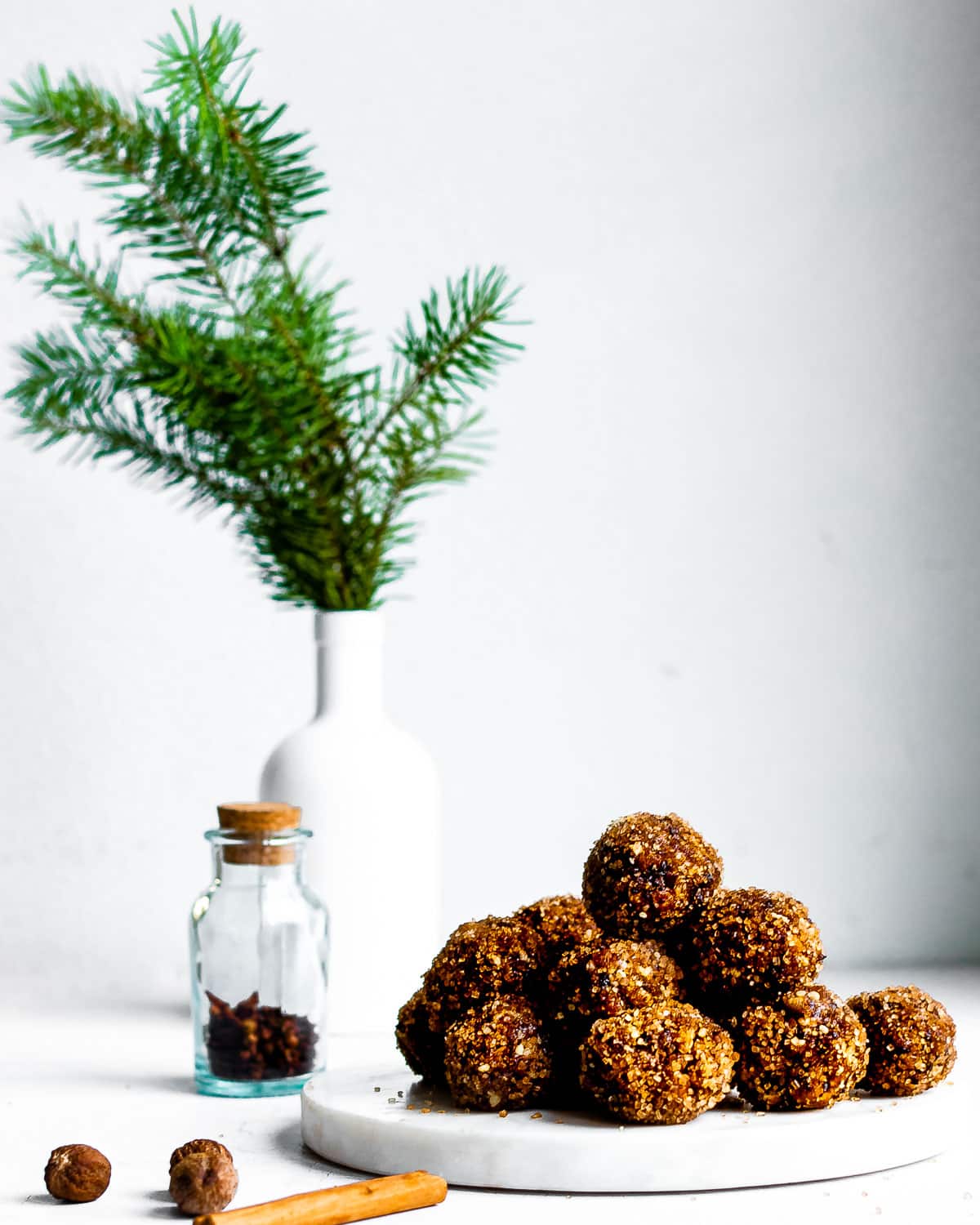
What are sugar plums?
Perhaps best known for their appearance in Clement Moore's iconic Christmas poem and Tchaikovsky's ballet The Nutcracker, sugar plums are inextricably linked to yuletide festivities. But what exactly are they?
Naturally, you might think they're simply sugar-coated plums, but the truth is a little hazier than that.
Sugar plums are sweet holiday treats made with dried fruit, nuts, and spices, and they're delicious when you serve them alongside a mug of hot mulled cider.
They're easy to make and can be a pleasant (and healthier) alternative to all the sugary, floury treats of the season and a great option to add to a holiday cookie plate.
It seems rather simple and straightforward, doesn't it? But it's not quite right. The sugar plums we know today as little round balls of spiced fruit and nuts are very different from the sort that the children in A Visit from St. Nicholas dreamt of on Christmas Eve.
So, what's the history?
The roots of sugar plums, and their connection to festivals and holidays, stretch nearly 500 years. In 16th-century England, the word plum not only referred to the summer stone fruit that we're familiar with today but to anything sweet, pleasant, and desirable.
At this time, sugar was both rare and precious and often used to preserve summer fruit - including plums. Cooks would boil them in a sugar syrup, similar to the way we still make candied ginger today. Sugaring fruit, such as plums, made them resistant to spoilage so that they could be enjoyed year-round.
A 17th-century cookbook specifically references sugaring plums in this way, calling it the "most kindly" way to preserve them as well as other small stonefruits, such as cherries (1). Whether these were the original sugar plums is still questionable.
A century later, candy makers were preparing sugar plums through a long process called panning. They'd progressively glaze seeds, aromatic spices such as coriander or fennel, and nuts in layers of sugar. The result was something similar to a Jordan almond (a hard nut encased in a hard shell of sugar).
It was a tedious process that could take days as each layer of sugar had to harden before the next could be applied.
This made sugar plums both expensive and largely inaccessible to most people. Accordingly, they were largely reserved for times of great celebration - such as Christmastime.
By the time Clement Moore's poem was published in the 1820s, advances in candy making made them less expensive (and faster) to produce. This made them as well as other candies more accessible. Certainly, children might have visions of sugar plums dancing in their heads.
Nearly 200 years later, this technique is largely forgotten as other candies fill stockings today. But, an attempt to revive the sugar plum in the 1960s yielded a new version, the one we know today: filled with dried fruit, nuts, and spices.
Key Ingredients
The ingredients for sugar plums are straightforward and uncomplicated, and you can find them in the bulk bins of just about any grocery store.
Dates make the bulk of the sugar plum and other dried fruits and help provide flavor and balance. Adding other fruit also improves the texture because too many dates make them unpleasantly sticky.
- Dates are the foundation of a sugar plum. Any date will work. Both Medjool and Deglet dates are easy to find and popular choices. I prefer using Honey Dates which have a creamy texture and honey-like flavor.
- Dried fruit can include just about any option. Prunes (dried plums) and Turkish apricots are my favorite choices. Turkish apricots taste like butterscotch and work well in this recipe. Dried cranberries, cherries, and even raisins can work, too.
- Nuts lend a little texture and buttery richness to this treat. Walnuts work well, but almonds are popular too. Pecans could certainly work well.
- Aromatic spices such as cinnamon, nutmeg, allspice, and cardamom are lovely additions to Christmas recipes. But fennel, coriander, and even caraway seeds can be nice choices.
- Honey provides added sweetness and helps all the dried fruit and nuts pull together when you form them into balls.
- Sparkling sugar, dried coconut, or even cocoa powder are essential for finishing the sugar plums. Minimally processed can sugars, such as Turbinado or Demerara, also work well.
How to Make Sugar Plums
Fortunately, modern sugar plums are infinitely easier to make than their centuries-old counterparts. It takes less than 10 minutes instead of days, and there's a lot less sugar involved, too.
- You'll combine all the ingredients (dried fruit, nuts, spices, and a spoonful of honey) in a food processor and process until well-mixed and coarse in texture, just shy of a sticky paste.
- Next, form the dried fruit mixture into small balls.
- Then, dredge them in sugar (sparkling sugar works well here, but I prefer Turbinado sugar). That's it. You're done.
Recipe Tips
This sugar plum recipe is especially easy to make. There's no cooking, no baking, and you can be a little sloppy in your measurements, and they'll still turn out fine. It's an excellent choice for making with small children, too.
- Dates are the foundation of the recipe but should only make up about half of the dried fruit. Too many dates produce a sticky mixture, and you'll have trouble forming it into balls.
- If your dried fruit is particularly moist, you might be able to skip the honey.
- Two small spoons work well to portion the dried fruit mixture so that you have evenly sized balls.
- Dredging the sugar plums in sugar, cocoa, or dried coconut is an essential step. The sugar coating (or similar coatings) prevents the treats from sticking together.
- It's a good thing to consider wearing gloves when forming the balls, as they're quite sticky.
Variations + Substitutions
If you're looking for a nut-free option, consider swapping pumpkin seeds or sunflower seeds for walnuts.
Dates should be the foundation of the recipe, but you can easily swap other dried fruit, such as cherries, cranberries, or even candied ginger, for some of the apricots and figs.
Adjust spices to your liking. Cinnamon is a natural match for Christmas, and coriander is a nod to traditional sugar plums. But you can easily add cardamom, anise seeds, or even fennel seed to the mix.
A little bit of brandy or rum, no more than a tablespoon, is a nice addition if you're planning to serve sugar plums to adults.
You can swap a little brown sugar in place of the honey if you prefer. This can be helpful if your dried fruit is particularly soft or moist.
You can also omit the honey entirely. While the honey helps to pull all the ingredients together, it's not necessary, and the dried fruit is sweet enough on its own.
Consider toasting the nuts before adding them to the food processor. Toasted nuts develop a richer flavor that can add a little dimension to this sugar plum recipe. Heat the oven to about 425 and let the nuts roast for about 10 to 15 minutes or until browned and fragrant.
You can also coat the sugar plums in coconut, powdered sugar, cocoa powder, sparkling sugar, or even edible glitter.
Recipe Questions
Homemade sugar plums will keep for about three days in a tightly sealed container at room temperature and five days in a tightly sealed container in the fridge. Bring to room temperature before serving.
Keep them in an airtight container at room temperature for up to 3 days or in the fridge for up to 5 days. If your sugar plums don't fit into your container in a single layer, place wax or parchment paper between the layers to prevent them from sticking.
Sugar plums taste like dried fruit with a vague butteriness that comes from the nuts. They're similar to date rolls and "energy bites," which are also made primarily of dried fruit and nuts.
Spices, such as cinnamon, allspice, and coriander, lend a pleasant aromatic quality to sugarplums, too.
Sugar plums will taste strongly of dried apricots and dates, as well as cinnamon and other warm spices. Traditional sugar plums, likely tasted of sugar and spices such as coriander.
Sugar plums are made of dried fruit, nuts, and aromatic spices with a touch of honey. Because you make them with minimally processed whole foods, they're healthier than most holiday treats which typically include white flour and white sugar. It's also a lighter option that can help offset heavy meals.
Sugar plums contain loads of fiber, vitamin B6 and minerals such as magnesium, potassium, phosphorus, and iron.
Both sugar plum and sugarplums work fine. Clement Moore's iconic Christmas poem, A Visit from St. Nicholas (also known as The Night Before Christmas), refers to them as sugar-plums.
Yes, you'll need to grind or chop the fruit and nuts into very small pieces and mix them together until they can hold the shape of a small ball. It's a tedious process by hand.
Try these holiday treats next
References
- Dugard, William (1651) Ladies Delights: To Adorn Their Persons, Tables, Closets and Distilleries.

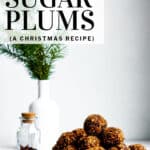
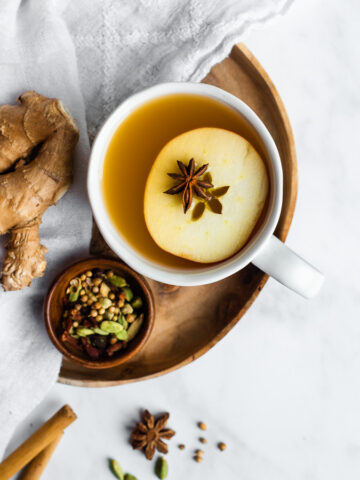

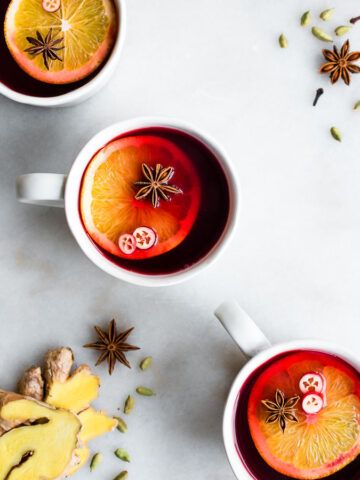
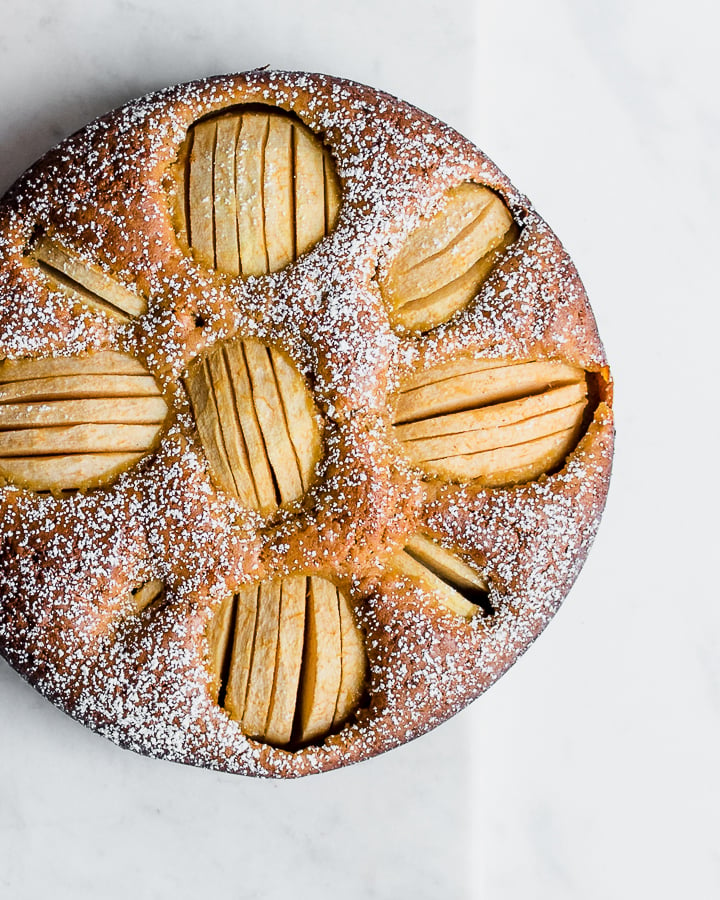
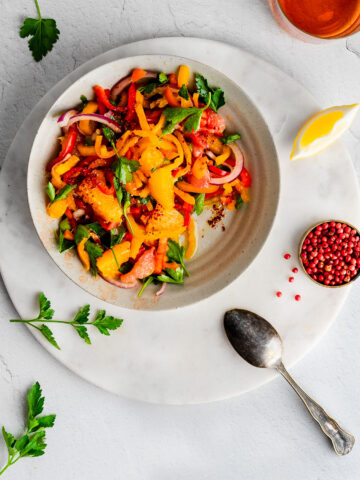
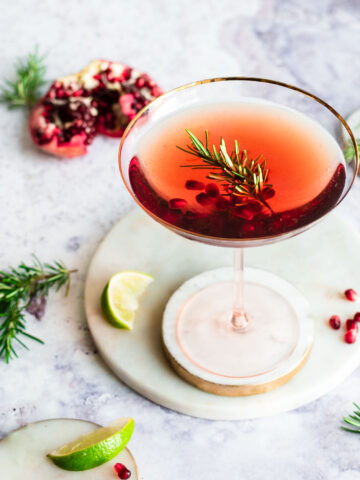
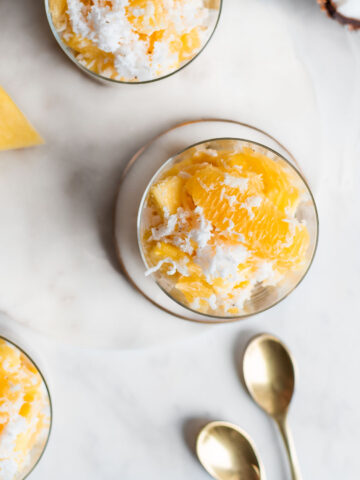
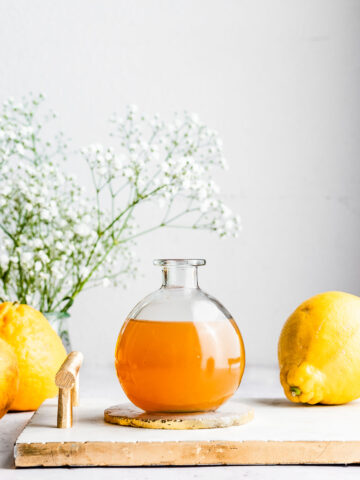
Len W says
I’ve used this recipe verbatim as a filling for holiday muffins (bran or carrot in my case). Prior to baking, drop a smallish dollop into a half filled muffin tin and top off with your batter. No need to adjust the baking time if your sugarplum filling is at room temperature.
I’ve also used this recipe as a sandwich cookie or cake filling. Just roll it out thinly between two sheets of greased wax paper. You can even cut it chilled into shapes with cookie cutters to top other desserts. Quite versatile. (It is Heaven atop a bread pudding).
4waystoyummy says
Wow. I loved the history and the recipe sounds fabulous! I will definitely make them as I dry all my own fruit. I have a lot of dried pears! My one question is that I tend to dry my fruit quite dry and wonder is I should hydrate it first? For example my plums (prunes) are not juicy like the ones from the store but more like fruit leather. I think I'll have to experiment. I love drying fruit and veggies and highly recommend it. Fruit and veggie powders are great. My new fun recipe to try is a dried fruit vinaigrette. Keep the ideas and yumminess coming! Happy Holidays!.
Jenny McGruther says
The fruit really needs to have some give to it, and it needs to be pliable. Hydrating it might help, but I'd eat them up pretty quickly or store them in the fridge as I'd be concerned about the potential of mold formation. Dried fruit vinaigrette sounds brilliant.
Christopher says
I made these this year and my family loved them! I'm not a fan of Walnuts, nor are several of my family members, so I made two different batches; one with almonds and the other with pecans. Both were fantastic, it was interesting to see the difference in the results due to the different oil content of the nuts. The pecan batch turned out a deep chestnut brown complimented with the rich flavor of the pecans. The almond batch were lighter in color, more orange-ish due to the apricots, and had a lighter flavor that allowed the spices come come through more. We enjoyed both and I will make both kinds again! Another thing I did differently was to roast the nuts in a dry cast iron pan before I chopped them, it really brought out the flavor of the nuts.
Joy says
These came out perfect, but I made them bigger - about the size of real plums.